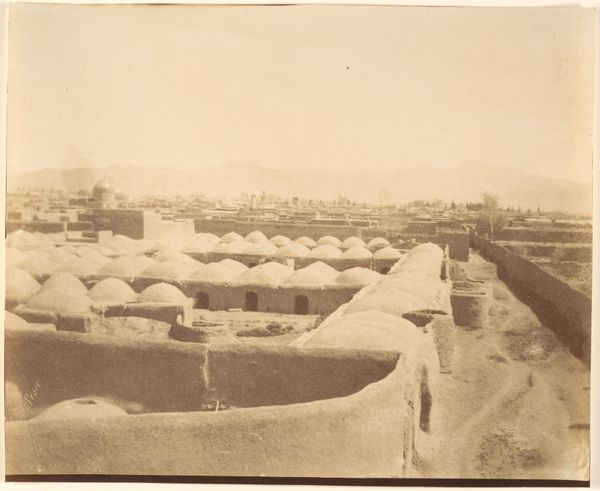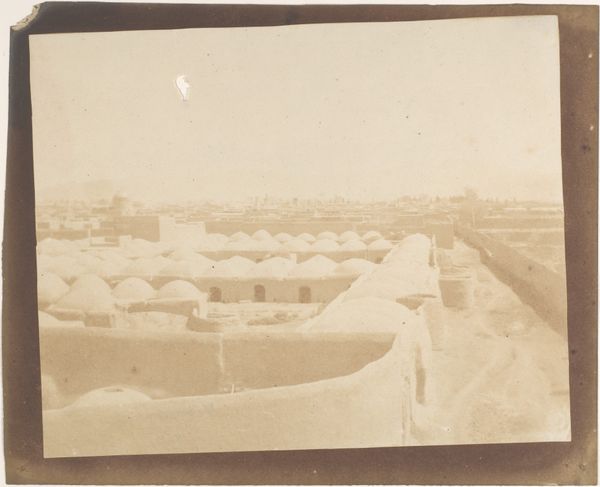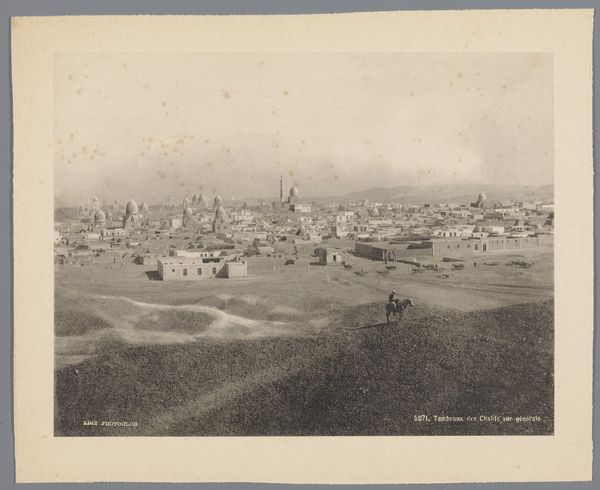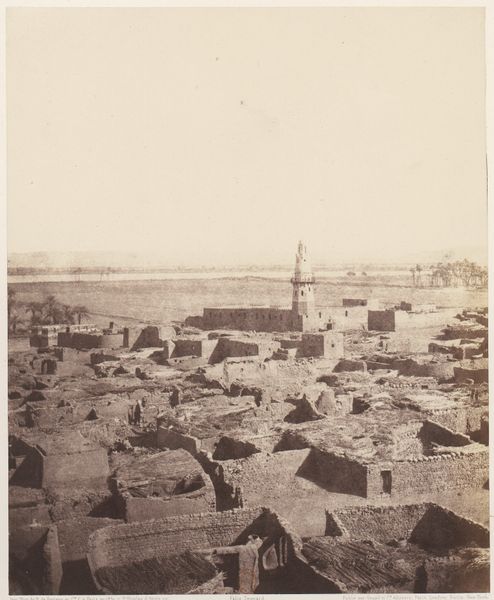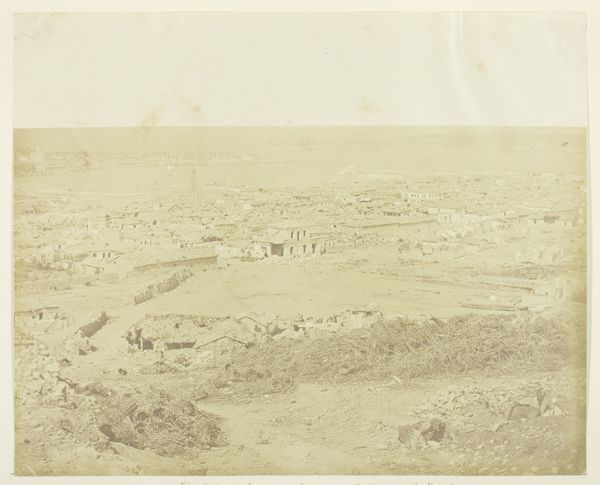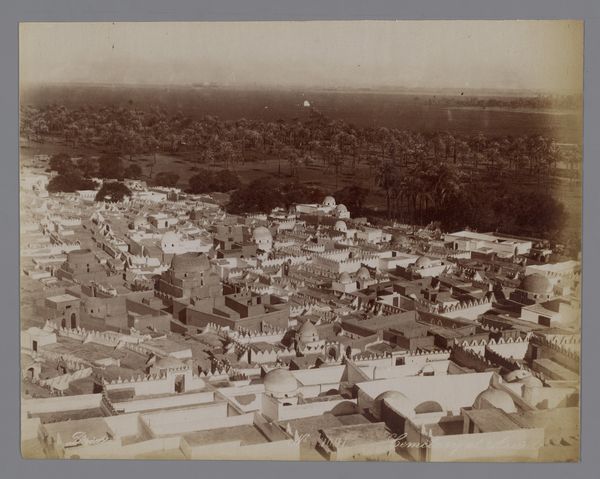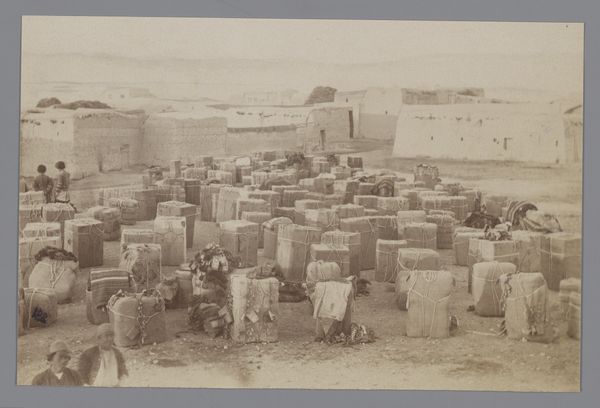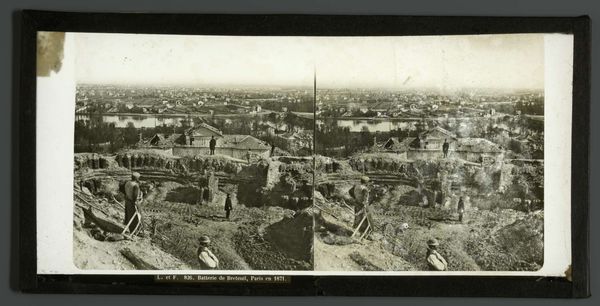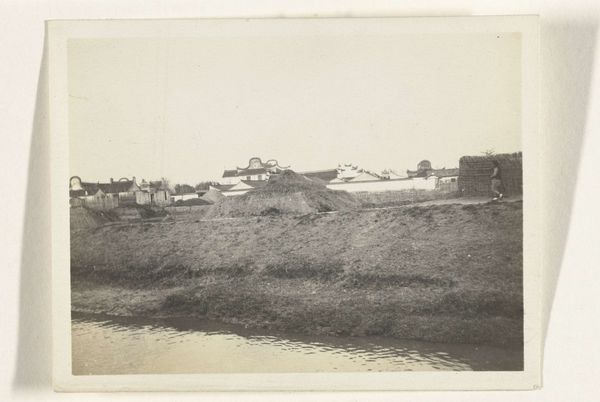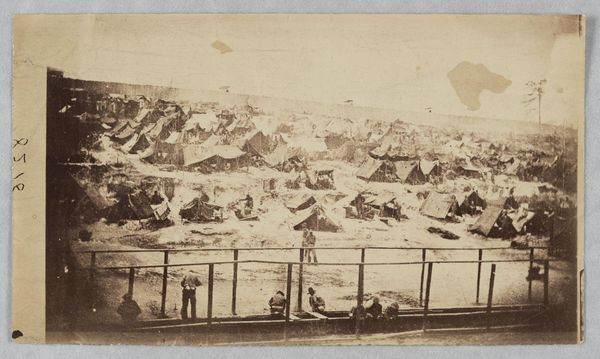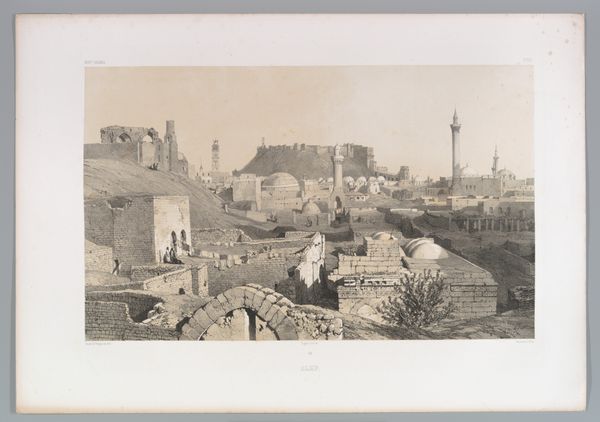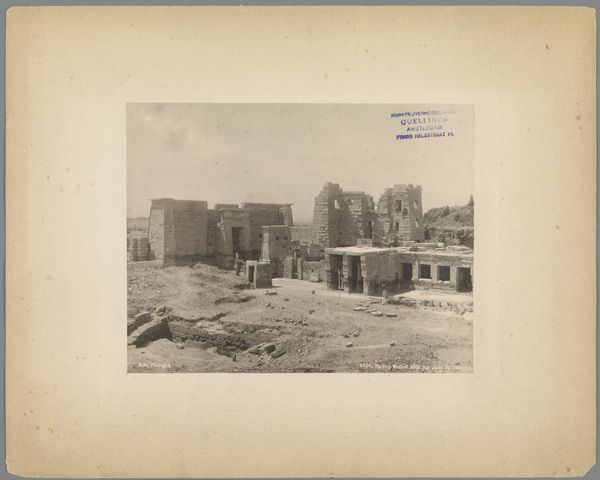
photography, albumen-print
#
photography
#
orientalism
#
cityscape
#
islamic-art
#
albumen-print
Dimensions: height 157 mm, width 228 mm
Copyright: Rijks Museum: Open Domain
Editor: This albumen print, titled "Kashan, Iran," was taken by Antoine Sevruguin sometime between 1880 and 1910. I’m struck by the muted tones and the almost endless expanse of domed roofs. What can you tell me about the cultural context of this photograph? Curator: It’s important to consider Sevruguin's position as a photographer operating within a complex colonial landscape. This image, like many of his works, catered to a Western fascination with the "Orient." How do you think this fascination might have shaped the way Sevruguin chose to depict Kashan? Editor: I guess I hadn't considered it from that perspective. I was initially focused on the formal aspects – the light, the repeating shapes, the architectural details – but now I wonder if the photograph reinforces a particular image of the Middle East for a Western audience. Were photographs like this used to justify colonial power? Curator: Absolutely. Photography at the time played a crucial role in shaping perceptions of the "other." Images like this one were often circulated as ethnographic documents or exotic views, reinforcing power imbalances. How does knowing this shift your understanding of the photograph's intent and impact? Editor: It makes me question the idea of the photograph as a neutral document. It's definitely not a straightforward representation of reality. I’m wondering, do we lose something valuable by viewing these photographs with contemporary, post-colonial eyes? Curator: I think we gain a richer understanding. By acknowledging the historical context, we can analyze the image not just for its aesthetic qualities but for its role in constructing narratives about Iranian culture and identity during that era. Recognizing the photographer's biases allows for a more nuanced and critical engagement. Editor: This is fascinating. I initially saw it as a simple landscape, but it’s clear it’s far more complicated. Thank you for helping me think critically about its historical and political dimensions. Curator: It's a reminder that all art is embedded in specific social and political circumstances. Analyzing those connections offers a far more rewarding viewing experience.
Comments
No comments
Be the first to comment and join the conversation on the ultimate creative platform.
